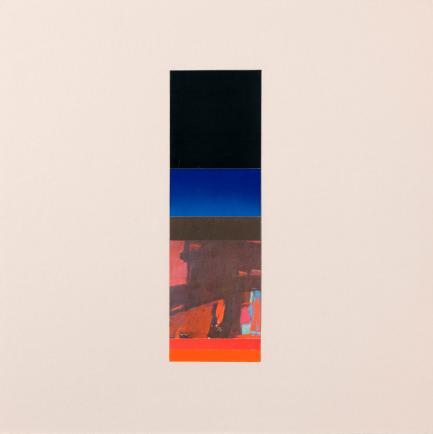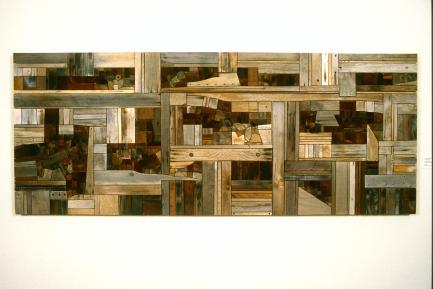George Morrison Retrospective Opens Oct. 5 at National Museum of the American Indian in New York
A collection of 78 works by George Morrison (Grand Portage Band of Chippewa, 1919-2000) will be on view at the Smithsonian’s National Museum of the American Indian in New York beginning Saturday, Oct. 5. The artist’s creative expression illustrated both a strong modernist vision and a deep connection to his ancestral homeland in the Great Lakes region. The exhibition is open through Feb. 23, 2014.
“Modern Spirit: The Art of George Morrison” will feature paintings, drawings, prints, collages and sculptures from the artist’s nearly six-decade career. Highlights include selections from his Lake Superior landscape series painted in the deep purples and reds of a sunrise over water. Several of these works reference the ancient Spirit Little Cedar Tree, which grows on the Grand Portage reservation and is considered sacred by the Anishinaabe people. The exhibition also presents abstract expressionist works from his New York period, including “Red Painting” or “Franz Kline Painting,” which was gifted to his good friend, painter Franz Kline.
Morrison grew up at the edge of Lake Superior and studied at the Minneapolis School of Art. He moved to New York City in 1943 to attend the Art Students League, where he began to explore abstract expressionism and became immersed in the thriving avant-garde arts community of the New York School. Morrison’s first solo exhibition, held at the Grand Central Moderns Gallery in New York in 1948, received critical praise, and he was included in a concurrent exhibition that year at the Whitney Museum of American Art. This was followed by a Fulbright Fellowship to study in France and a John Hay Whitney Foundation Fellowship. Though he continued to spend time in New York throughout his mid-career and exhibited with the likes of Willem de Kooning and Philip Guston, Morrison retained close ties to his ancestral homelands. He also spent summers on Cape Cod, where he made assemblages he coined “paintings in wood” from driftwood found during his frequent strolls along the beach with his family. The elemental landscapes of the shoreline and horizon found in the composition of his paintings and collages are evocative of these well-loved natural environments. Morrison returned to the Lake Superior region toward the end of his life, building his final home and studio, known as Red Rock, on the Grand Portage Ojibwa Indian Reservation.
“Modern Spirit: The Art of George Morrison” is organized by the Minnesota Museum of American Art and Arts Midwest in Minneapolis, Minn., with the Plains Art Museum in Fargo, N.D. The exhibition and its national tour are supported by corporate sponsor Ameriprise Financial and foundation sponsor Henry Luce Foundation. Major support is provided by the National Endowment for the Arts and the generous contributions of individuals across the Midwest. The exhibition will travel to six museums from 2013 through 2015. Learn more at www.mmaamorrison.org.
“Modern Spirit: The Art of George Morrison” is curated by W. Jackson Rushing III, Adkins Presidential Professor of Art History and Mary Lou Milner Carver Chair in Native American Art at the University of Oklahoma. It will be on view at the National Museum of the American Indian in New York concurrently with the exhibition, “Before and after the Horizon: Anishinaabe Artists of the Great Lakes,”a survey of Anishinaabe works from pre-history to the present day that will also include several pieces by Morrison.
The Smithsonian’s National Museum of the American Indian in New York is located at One Bowling Green in New York City, across from Battery Park. The museum is free and open every day from 10 a.m. to 5 p.m., and Thursdays until 8 p.m. (closed Dec. 25). Call (212) 514-3700 for general information. By subway, the museum may be reached by the 1 to Rector Street or South Ferry, the 4 or 5 to Bowling Green or the R to Whitehall Street. The museum’s website is www.AmericanIndian.si.edu.
# # #
SI-327-2013




